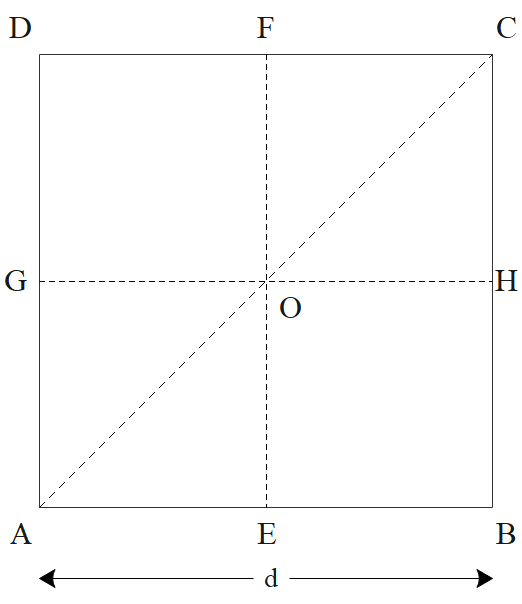
A lift is coming from the 8th floor and is just about to reach the 4th floor. Taking ground floor as origin and positive direction upwards for all quantities, which one of the following is correct?
(A) $x<0, v<0, a>0$
(B) $x>0, v<0, a<0$
(C) $x>0, v<0, a>0$
(D) $x>0, v>0, a<0$
Answer
220.5k+ views
Hint: We should know that velocity is defined as the rate change of displacement per unit time. Speed in a specific direction is also known as velocity. Velocity is equal to displacement divided by time. Speed, being a scalar quantity, is the rate at which an object covers distance. The average speed is the distance which is a scalar quantity per time ratio. On the other hand, velocity is a vector quantity; it is direction-aware. An object which moves in the negative direction has a negative velocity. If the object is slowing down then its acceleration vector is directed in the opposite direction as its motion in this case. Based on this we have to solve this question.
Complete step by step answer
We know that displacement is defined to be the change in position of an object. It can be defined mathematically with the following equation:
Displacement $=\Delta x = x_f - x_0$
The diagram for this question is given below:

As the lift is coming in downward directions, displacement will be negative. We have to see whether the motion is accelerating or retarding. We know that due to downward motion displacement will be negative. When the lift reaches 4th floor is about to stop hence, motion is retarding in nature hence, $x<0, a>0 .$ As displacement is in the negative direction, velocity will also be negative that is $v<0$.
So, option A is correct.
Note:
We should know that if an object's speed or velocity is increasing at a constant rate then we say it has uniform acceleration. The rate of acceleration is constant. If a car speeds up then slows down then speeds up it doesn't have uniform acceleration. The instantaneous acceleration, or simply acceleration, is defined as the limit of the average acceleration when the interval of time considered approaches 0. It is also defined in a similar manner as the derivative of velocity with respect to time. If an object begins acceleration from rest or a standstill, its initial time is 0. If we get a negative value for acceleration, it means the object is slowing down. The acceleration of an object is its change in velocity over an increment of time. This can mean a change in the object's speed or direction. Average acceleration is the change of velocity over a period of time. Constant or uniform acceleration is when the velocity changes the same amount in every equal time period.
Complete step by step answer
We know that displacement is defined to be the change in position of an object. It can be defined mathematically with the following equation:
Displacement $=\Delta x = x_f - x_0$
The diagram for this question is given below:

As the lift is coming in downward directions, displacement will be negative. We have to see whether the motion is accelerating or retarding. We know that due to downward motion displacement will be negative. When the lift reaches 4th floor is about to stop hence, motion is retarding in nature hence, $x<0, a>0 .$ As displacement is in the negative direction, velocity will also be negative that is $v<0$.
So, option A is correct.
Note:
We should know that if an object's speed or velocity is increasing at a constant rate then we say it has uniform acceleration. The rate of acceleration is constant. If a car speeds up then slows down then speeds up it doesn't have uniform acceleration. The instantaneous acceleration, or simply acceleration, is defined as the limit of the average acceleration when the interval of time considered approaches 0. It is also defined in a similar manner as the derivative of velocity with respect to time. If an object begins acceleration from rest or a standstill, its initial time is 0. If we get a negative value for acceleration, it means the object is slowing down. The acceleration of an object is its change in velocity over an increment of time. This can mean a change in the object's speed or direction. Average acceleration is the change of velocity over a period of time. Constant or uniform acceleration is when the velocity changes the same amount in every equal time period.
Recently Updated Pages
Mass vs Weight: Key Differences Explained for Students

Electricity and Magnetism Explained: Key Concepts & Applications

JEE Energetics Important Concepts and Tips for Exam Preparation

JEE Isolation, Preparation and Properties of Non-metals Important Concepts and Tips for Exam Preparation

JEE Main 2021 July 25 Shift 1 Question Paper with Answer Key

JEE Main 2021 July 22 Shift 2 Question Paper with Answer Key

Trending doubts
JEE Main 2026: Application Form Open, Exam Dates, Syllabus, Eligibility & Question Papers

Understanding Uniform Acceleration in Physics

Derivation of Equation of Trajectory Explained for Students

Hybridisation in Chemistry – Concept, Types & Applications

Understanding the Angle of Deviation in a Prism

How to Convert a Galvanometer into an Ammeter or Voltmeter

Other Pages
Thermodynamics Class 11 Physics Chapter 11 CBSE Notes - 2025-26

JEE Advanced Marks vs Ranks 2025: Understanding Category-wise Qualifying Marks and Previous Year Cut-offs

Units And Measurements Class 11 Physics Chapter 1 CBSE Notes - 2025-26

NCERT Solutions For Class 11 Physics Chapter 8 Mechanical Properties Of Solids

Motion in a Straight Line Class 11 Physics Chapter 2 CBSE Notes - 2025-26

NCERT Solutions for Class 11 Physics Chapter 7 Gravitation 2025-26




